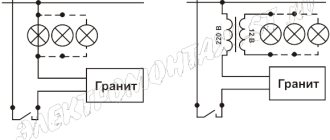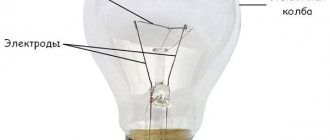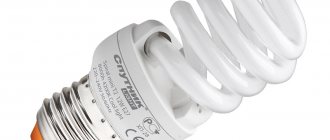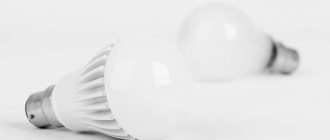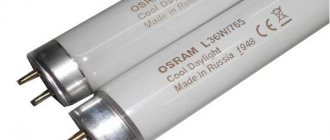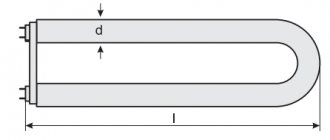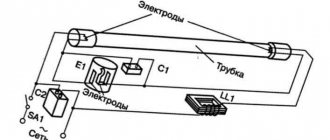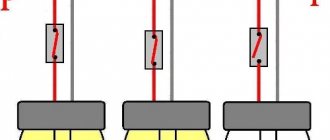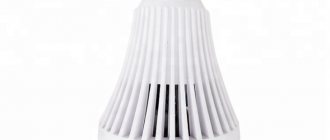Many car enthusiasts want to improve the low beam of their car. Most people use the simplest method, which is to install more powerful halogen lamps. We will test 10 models, 7 of which are premium and promise an improvement of up to 150%. Initially, an improvement of 50% or 70% was indicated on premium models to increase sales. Now this figure has reached a maximum reasonable value of 150%. Sales are based on Chinese marketing, whoever deceives the most will sell.
Price
The cost of premium H4 low beam halogen lamps differs from standard Philips and Osram lamps by 4-6 times. Usually the price is in the range of 1300-1700 rubles. per set. A standard H4 halogen installed by the manufacturer costs 150-200 rubles. a piece.
| Name | Price |
| 1. PIAA Hyper Arros +120% H4 | 1300 rub/set |
| 2. Koito Whitebeam III Premium H4 | 1650 rub/set |
| 3. Fukurou F1 H4 | 1600 rub/set |
| 4. Philips Racing Vision +150 H4 | 1200 rub/set |
| 5. Osram Night Breaker Laser +150 H4 | 1800 rub/set |
| 6. General Electric Megalight Ultra +150 H4 | 1350 RUR/set |
| 7. Bosch Gigalight plus 120 H4 | 1100 rub/set |
| 8. Champion +90 H4 | 300 rub/set |
| 9. Osram Original H4 | 320 RUR/set |
| 10. GSL Standard +30% H4 | 200 rub/set |
Lamps without packaging, arrangement as in the table.
Number of lumens
Preheat the samples for 5 minutes until the light flux stabilizes. A photometric sphere is used to measure light. We use Osram Original H4 as a sample of a standard lamp; all others will be compared with it.
| Name | Near | Further | Difference |
| 1. PIAA Hyper Arros +120% H4 | 1080lm | 1650 lm | +3% / 0% |
| 2. Koito Whitebeam III Premium H4 | 960 lm | 1600 lm | -9% / -4% |
| 3. Fukurou F1 H4 | 1390 lm | 2050 lm | +32% / +23% |
| 4. Philips Racing Vision +150 H4 | 1200 lm | 1640 lm | +14% / -2% |
| 5. Osram Night Breaker Laser +150 H4 | 1150 lm | 1610 lm | +10% / +4% |
| 6. General Electric Megalight Ultra +150 H4 | 1210 lm | 1700 lm | +15% / +2% |
| 7. Bosch Gigalight plus 120 H4 | 1120 lm | 1650 lm | +7% / 0% |
| 8. Champion +90 H4 | 780 lm | 1470 lm | -25% / -12% |
| 9. Osram Original H4 | 1050 lm | 1670 lm | — |
| 10. GSL Standard +30% H4 | 1080 lm | 1690 lm | +3%/ 0% |
The Japanese Fukurou F1 are in the lead with a short-range result of +32%, a long-range result of +23%. The rest have a maximum of +15% on low beam, +4% on high beam. The luminous flux is practically no different from standard halogen bulbs, so there cannot be any +150%.
Power
To measure power consumption, set the voltage on the lamp to 13.2 Volts.
The maximum power at low beam differs by +10% from the standard one. At a distance it differs only by +2%. Tests show that the power is practically the same as the standard model. Some car enthusiasts are afraid that expensive models will heat up the headlight more, and the reflector or lens will become cloudy. There will be no consequences, the service life of the headlight will remain the same.
| Name | Near | Further |
| 1. PIAA Hyper Arros +120% H4 | 72w | 78w |
| 2. Koito Whitebeam III Premium H4 | 70w | 74w |
| 3. Fukurou F1 H4 | 71w | 77w |
| 4. Philips Racing Vision +150 H4 | 71w | 77w |
| 5. Osram Night Breaker Laser +150 H4 | 70w | 77w |
| 6. General Electric Megalight Ultra +150 H4 | 65w | 77w |
| 7. Bosch Gigalight plus 120 H4 | 65w | 68w |
| 8. Champion +90 H4 | 65w | 76w |
| 9. Osram Original H4 | 65w | 76w |
| 10. GSL Standard +30% H4 | 69w | 76w |
Colorful temperature
Expensive samples promise a color temperature closer to white light. The standard is 3200K, approximately the same as conventional incandescent lamps. To produce white light you need at least 4000 Kelvin. The Koito Whitebeam III Premium has the whitest light, only 3900K instead of the stated 4500K. For the rest, it practically does not differ from the standard halogen, it is in the range of 3400K - 3600K.
| Name | Stated | Near | Further |
| 1. PIAA Hyper Arros +120% | 3900K | 3400K | 3500K |
| 2. Koito Whitebeam III Premium | 4500K | 3900K | 4070K |
| 3. Fukurou F1 | 3300K | 3300K | 3350K |
| 4. Philips Racing Vision +150 | 3500K | 3600K | 3650K |
| 5. Osram Night Breaker Laser +150 | 3900K | 3500K | 3800K |
| 6. General Electric Megalight Ultra +150 | — | 3400K | 3600K |
| 7. Bosch Gigalight plus 120 | — | 3400K | 3300K |
| 8. Champion +90 | — | 3250K | 3600K |
| 9. Osram Original | 3200K | 3170K | 3190K |
| 10. GSL Standard +30% | — | 3100K | 3200K |
Types of halogen devices
There is a wide range of lamps on sale. Let's take a closer look at the main types.
Linear halogen devices
The first of the varieties of halogen lamps to appear was created back in the 1960s. The design consists of a quartz tube with double-sided leads, while the filament body is supported in the internal space using special wire brackets.
Devices with small parameters have significant power - 1-20 kW, which is why they are practically not used indoors - they are mainly used for outdoor lighting, inserted into spotlights.
Modern linear flood light models are suitable for use both outside and inside spaces. The characteristic properties of such lamps are high light intensity and increased impact resistance.
Devices of this type are available in standard lengths; the most popular modifications are 78 and 118 mm. Most linear units, including the popular double-ended R7s, are designed to be mounted horizontally.
Halogen lamps with external bulb
Mains voltage devices are designed to directly replace incandescent lamps. They are equipped with glass covers mounted on standard E14, E27 bases.
In the internal space there is a halogen device with a quartz lamp, designed for a voltage of 220 V. The outer shell of glass protects the smaller quartz flask from accidental touches and contamination.
Devices can be of different shapes and have different cap options: matte, transparent, milky. There are also modifications with glass that absorbs UV radiation.
Compared to traditional incandescent devices, halogen lamps have better color rendering, as they produce a luminous flux of high color t - 2900-3000 Kelvin.
This type of device is often smaller in size than standard incandescent lamps, allowing them to be used in miniature lighting applications. There are also decorative models in the form of candles, balls, hexagons, which can be used in a variety of lamps
Since the lamps are connected to the network without a transformer, their service life directly depends on the performance of the power supply device.
It is advisable to connect them through a protective block, which ensures a smooth start without a sharp increase in power at the moment of switching on. This same specialized device will allow you to level out possible voltage drops.
Directional lamps with reflectors
The design of this type of device consists of a small flask equipped with a special reflector. It redistributes the light rays sent by the device located in the center.
Reflectors can be made of different materials, but aluminum elements are the most popular.
There are several options for such lamps, produced in standard sizes MR8, MR11, MR16. The most popular is the latest modification with a flask diameter of 50 millimeters. Models also differ in the angle of radiation.
Lamps with a reflector are often used to organize spot directional lighting. They are often used for installation in suspended/stretch ceilings; a correctly calculated number of devices allows them to be used even for general lighting
As with all halogen devices, this category is characterized by high heat transfer, with thermal radiation directed forward. If this effect is undesirable, you can use models whose reflectors transfer heat back.
Devices with reflectors can be either low-voltage, designed for 6, 12, 24 V, or high-voltage, powered from the mains. In the first case, they are equipped with two-pin connectors GY4, GZ4, GU4, GX5.3, GU5.3, GY6.35, in the second with G9, G10 sockets.
The bases of low-voltage halogen lamps with reflectors - 6, 12, 24 V - can have different two-pin connectors. In this case, the numbers indicate the distance between the pins.
One of the most popular types of halogen lamps are 12 Volt halogens. Read more about them in this material.
An innovative type of reflector lamps are IRC-halogen. A special coating is applied to their flask, which does not transmit infrared radiation from the tungsten filament, but reflects it back onto the filament body.
This allows you to reduce heat transfer, which reduces energy consumption by almost half.
Models of this type may have transparent or colored protective glass, usually with UV protection. There are also modifications without a cap, which are used in closed luminaires
Halogen devices with a reflector are considered the most fireproof. The provided heat dissipation process prevents heating of nearby surfaces.
Capsule or finger modifications
This type of lamp is a miniature capsule with leads, and the filaments can be located transversely or longitudinally, depending on the model. Suitable for use in open luminaires without protective caps.
Capsule halogens are widely used for decorative lighting: they are mounted in chandeliers, built into furniture or into ceiling structures
For this category of light bulbs, sockets G4, G5.3, GY6.35 are used. The most popular are G9 mains voltage devices, which are widely used both for decorative purposes and for organizing work lighting.
Description of measuring points
To compare different light sources, GOST is used, which regulates the main points for measuring illumination according to a table posted on the wall. The number in the designation of a point is equal to its distance from the car. The letters L and R indicate location, left and right. Main measuring points according to GOST: 75R and 50R - illumination of the right side of the road at a distance of 75 and 50 meters; B50L - is responsible for the level of blinding of the driver of an oncoming car; long-distance is measured at the center of the table and is located in the center of the lane; The axial luminous intensity determines the level of illumination in front of the car.
Manufacturers of high-quality halogen lamps.
For home use, it is more convenient to use a threaded base.
All models except linear ones are suitable for lighting apartments. A good option is lamps with an external bulb. They are specially designed as a replacement for incandescent lamps. But it is better to check in the instructions for the chandelier or lamp which light bulbs are compatible with it.
Pay attention to the type of bulb base and the required voltage. For ordinary chandeliers, the usual E14 and E27 threaded ones are more convenient. To avoid additional wiring complications, choose lamps that operate on alternating current.
Before purchasing, calculate the total power of the light bulbs: it should not exceed the load of the chandelier.
Because halogen lamps become very hot, keep them away from plastic and paper materials.
The following manufacturers stand out:
- Osram. German manufacturer that complies with international quality standards. Specializes in the production of a variety of light sources. For domestic use, halogen lamps are manufactured in different designs and wattages.
- Philips. Manufacturer from the Netherlands. Leader in the lighting market. It produces lamps for home lighting, floodlights, and for cars. Headlight bulbs are equipped with a special filter that reduces their yellowing.
- Navigator. Russian manufacturer. Manufactures light sources according to Russian and international quality standards. Specializes in halogen lamps for indoor and outdoor lighting.
- Camelion. A Russian manufacturer that puts quality first. Light sources are tested repeatedly, including in our own laboratories. Leader in the production of lamps for home and offices.
- Related Posts
- Types of lamps with g4 socket, comparison, popular manufacturers and models, selection of drivers for g4 12V lamps
- What are fluorescent fluorescent lamps and what are they?
- Why are chokes (ballasts) needed for fluorescent lamps?
Comparison of illumination according to GOST
The samples are installed in a new headlight from Volkswagen Polo with a socket, then we measure the illumination of the control points. The voltage is 13.2 Volts on the lamp, not the power supply. This compensates for the reduction in voltage in the power wires.
| Name | 50L | 50R | 75R | Axial | Further |
| 1. PIAA Hyper Arros +120% | 8,2 | 26,1 | 26 | 25,6 | 33 |
| 2. Koito Whitebeam III Premium | 5,6 | 26,9 | 25,7 | 26,7 | 40,8 |
| 3. Fukurou F1 | 11,2 | 41,6 | 42,1 | 44,6 | 53,4 |
| 4. Philips Racing Vision +150 | 12 | 40,1 | 39,8 | 43,3 | 40,1 |
| 5. Osram Night Breaker Laser +150 | 11,8 | 38,2 | 40,8 | 38,4 | 31,5 |
| 6. General Electric Megalight Ultra +150 | 11,8 | 32,3 | 36,1 | 32,6 | 33,4 |
| 7. Bosch Gigalight plus 120 | 11,9 | 29,5 | 32,5 | 30 | 32,5 |
| 8. Champion +90 | 6,3 | 7,7 | 10 | 8 | 27,3 |
| 9. Osram Original | 10,5 | 27,3 | 30,3 | 28 | 33,2 |
| 10. GSL Standard +30% | 7,8 | 38,6 | 35,1 | 40,6 | 31,1 |
The results are surprising, even Philips and Osram significantly overestimate the real characteristics or hide them behind advertising figures +120%, +150%.
Since the luminous flux is almost the same (except for Fukurou F1) with a standard halogen lamp, you can change the illumination on the road in one way. The near spiral is moved closer to the base, the illumination in the center increases, but the illumination in the near zone decreases.
Types of halogen lamps.
There are many types and types of halogen light sources.
Linear. Tube-shaped lamps. Used to illuminate large areas: warehouses, workshops, streets. Used in spotlights. Such light sources are durable, bright, and powerful. But not energy efficient.
Capsule. Compact, small, low-power. Used for spot decorative lighting in cars. Suitable for open type lamps. Can be used with a reflector.
With reflector. Consist of a miniature light bulb with a dome-shaped reflector. Such lamps create directed radiation into a given space. Reflectors are either aluminum or interference. In the first case, heat is transferred forward, and in the second - back. They also produce light sources with a reflector with a protective cover. Used for lighting, table and wall lamps, in suspended ceilings, cars, spotlights.
With external flask. Designed to replace incandescent lamps. They are produced with standard sockets E14 and E27, which allows them to be screwed into ordinary chandeliers and lamps. The inner quartz bulb houses a miniature or tubular halogen light bulb. And the outer glass bulb is designed to protect the lamp from dirt and a person from burns. The outer flask is made in different shapes and colors.
IRC halogen lamps. An analogue of lamps with a reflector, which is coated with a special composition that reflects infrared radiation. The most energy efficient type. A special coating reflects infrared radiation from the tungsten filament back onto the filament. As a result, the tungsten temperature increases and heat loss decreases. As a result, electricity consumption is reduced and service life is increased.
Halogen chandeliers. Miniature, beautiful light bulbs are a good find for interior decoration. It is recommended to use ceramic cartridges to avoid overheating.
Low voltage. Light sources operating on 6, 12 or 24 V. The most common option is 12 V. Suitable for lighting flammable objects and rooms with high humidity levels. Used for safe lighting in museums, spot lighting, etc. Used to work in battery devices and vehicles. Connected via a step-down transformer.
GLs are divided according to the type of base. Depending on the purpose, size, and design, lamps are equipped with different types of sockets.
- To replace incandescent lamps, use halogen lamps with threaded sockets E14 and E27.
- Linear ones are equipped with an R connector
- For cars, lamps with H/HB socket are produced: H3, H19, H1, H11; HB4, HB3, etc.
- Low-voltage light sources are equipped with a GU 5.3, G4, GY 6.35, GU10, G9 or G12 pin base to prevent their installation in a 220 V network.
Types of socles.
Life time
The service life of most premium H4 lamps is much lower than standard ones. I found only 4 specifications specified by the manufacturers. Other brands do not provide such information.
| Name | Near | Further |
| Osram Original | 900h. | 500h. |
| Fukurou F1 | 500h. | 400h. |
| Philips Racing Vision +150 | 200h. | 200h |
| Osram Night Breaker Laser +150 | 240h. | 160h. |
The service life of the Japanese Fukurou F1 H4 is on average 2-3 times higher than the expensive Philips and Osram models on low and high beam. I don’t understand why the service life of premium Philips and Osrams is so low, the power is almost the same as the standard ones, and the color temperature changes due to the blue filter. I assume that the service life is artificially underestimated in order to buy more often.
Test results
The leader in testing in terms of luminous flux and illumination on the road was the Japanese Fukurou F1 halogen lamps. Unfortunately, the world-famous brands Philips, Osram, Koito, PIAA, Bosch, General Electric are deceiving their customers. They do not provide the promised improvement; illumination can only increase by 34% for samples No. 3,4,5.
As a result, we get an improvement in illumination by a maximum of 25% -34%, and the cost is 400% -600% higher. Taking into account the short service life, 2-3 times less than the standard one, the operating cost is quite expensive.
Some car enthusiasts practically do not notice the difference in the lighting of standard and premium lamps. Some people convince themselves of a significant improvement in the illumination of the road surface. Usually depends on age, color vision acuity, and the driver’s visual condition.
Author: Sergey Kazantsev
What is a halogen lamp
The design of a halogen lamp lamp is in many ways similar to a conventional incandescent light bulb. The glass bulb of the device has ideal transparency of the walls, so it is quite possible to try to see and understand how a halogen lamp works and what it is. Essentially, a halogen lamp uses the principle of passing current through a hot coil, like an incandescent lamp, but such a lamp operates on a slightly different principle of generating visible light.
Device
All halogen light bulbs, with the exception of industrial and special models, consist of the same components, which may differ in shape and size, but are still present in a lamp of any circuit:
- Powerful filament filament made of tungsten or tungsten-rhenium alloy. The filament is much thicker than that of conventional light bulbs, and it is attached to massive needle pins;
- Base group with contacts, most models of household halogen lamps are made with standard bases, allowing you to install the light bulb in the socket of a home lamp or chandelier. Special lamps can be equipped not with a base, but only with a group of contacts;
- Optical quality quartz outer glass bulb.
For stable operation of a halogen lamp, you will also need a device to start the halogen lamp - a dimmer or transformer.
For your information! The requirements for the quality and absence of defects in the glass body of halogen lamps are much stricter than for old incandescent, LED or fluorescent lamps.
The light flux density is so high that any speck, dust or defect inevitably leads to burnout and destruction of the glass bulb, inside of which a mixture of inert gases and halogens is pumped under pressure. Before the advent of LED assemblies, most motorists thoroughly washed the bulb with a mixture of pure alcohol and acetone before installing halogen lamps in headlight sockets.
Principle of operation
A halogen lamp, despite the presence of an incandescent spiral and a gas-filled bulb, is only superficially similar to a conventional incandescent lamp; the principle of its operation is significantly different from the old classic light bulb. An ordinary lamp emits light due to the glow of the incandescent surface of a thin tungsten coil.
A halogen incandescent lamp also emits light thanks to tungsten ions, but the process itself is organized differently:
- The flow of light in a halogen lamp is formed by a thin hot gas cloud enveloping a tungsten filament. The atmosphere of the thinnest gas film consists of tungsten iodide vapor surrounded by a mixture of xenon and nitrogen;
- As soon as operating voltage is applied to the contacts of the halogen lamp, part of the surface of the tungsten atoms evaporates and reacts with iodine. It is this metal-halogen cloud that interacts with xenon that emits the main amount of light;
- Iodine vapor actually holds tungsten molecules above the hot spiral, preventing it from evaporating and falling out as a film on the inner surface of the quartz flask.
In a halogen lamp, light is generated not by a thin tungsten spiral, but by a gas cloud surrounding it, consisting of hot halogens, metal vapors and xenon. What does this give? The difference in the light output of an ordinary incandescent light bulb and a household halogen light bulb is huge, but due to the peculiarities of the human eye, it seems that the difference is not that big.
The easiest way to evaluate how different the light of halogen light bulbs and conventional light bulbs is is at night. It is enough to accidentally, for a split second, catch your gaze at the bright light of car headlights with halogen inserts to go blind for several minutes. Whereas you can still look at an ordinary lamp, albeit with discomfort.
Life time
Most household halogen lamps are designed for a standard service life: 2000 hours for high-quality light bulbs, for branded lamps - 2500 hours, Chinese fakes of well-known brands serve differently - from 500 to 1500 hours. Surprisingly, the “Chinese” ones fail mainly due to minor defects, for example, due to unsoldering of contacts or deformation of the base due to overheating of the case.
Such little things can easily be fixed with your own hands, so with careful handling of the base, even a Chinese halogen lamp can last up to 1500 hours.
You can extend the service life using special starting devices. This could be a special transformer for halogen lamps, controlled dimmers and barreters that limit the surge of current when the lamp is turned on. This allows you to avoid cracking of the tungsten filament due to uneven heating in the first seconds. The turn-on time of a halogen lamp increases to 3 seconds, but in this way it is possible to increase the service life to 10-15 thousand hours, which is comparable to the resource of LED light sources.
Advantages and disadvantages
In the popularity ranking, halogen light bulbs occupy the third position in the list of the most popular light sources. The lamps are considered quite bright and hot, with a temperature of 2700-2900oK. What is especially valuable is that the spectrum of a halogen lamp, although shifted to a colder region in comparison with a light bulb of a classical design, is more similar to sunlight, old “spirals”, LDS or newfangled LED assemblies.
The light output of halogen lamps is 50-70% higher than that of conventional light bulbs, and their service life is twice as long.
There are only two disadvantages of halogen lamps:
- High sensitivity to voltage surges and quick start;
- High energy consumption and intense heat generation.
Accordingly, the lamps have to be equipped with a system for blowing the housing and removing heat, and install protective blocks at the connection.

